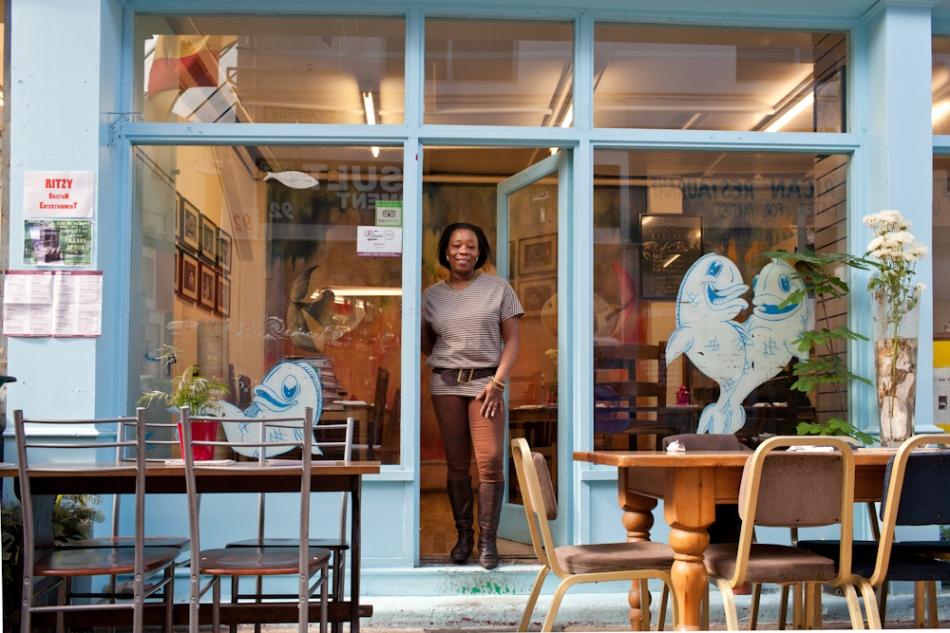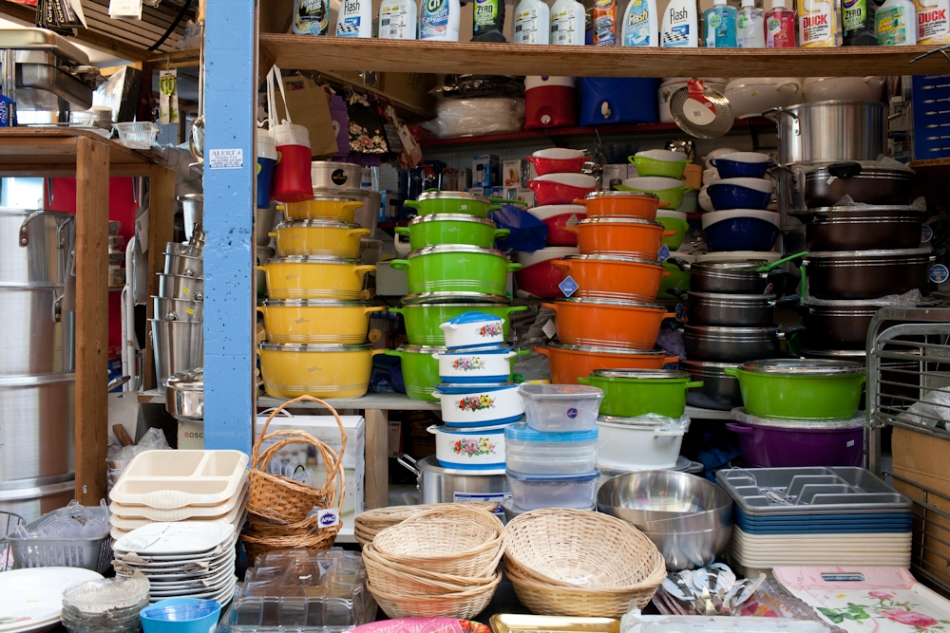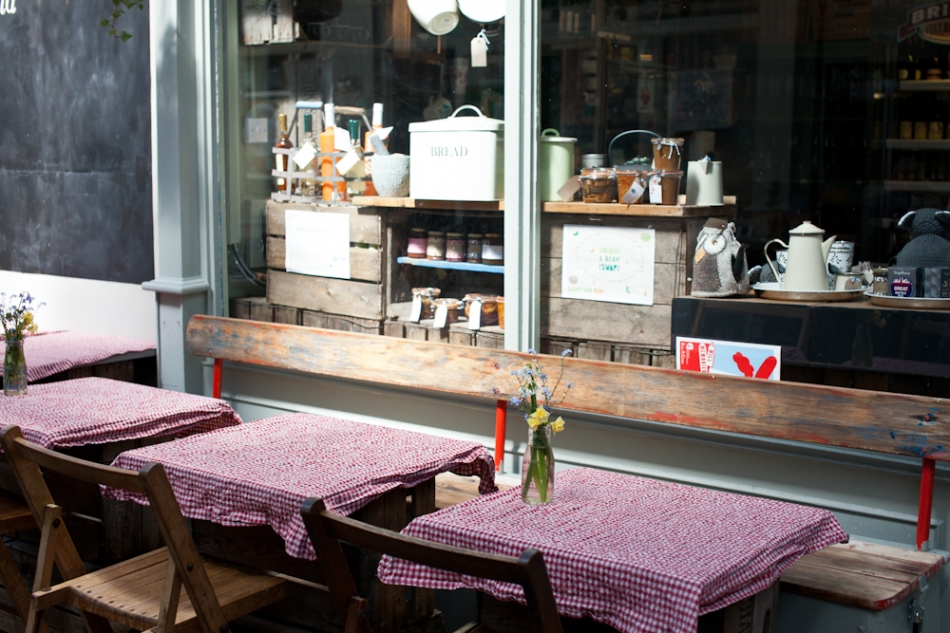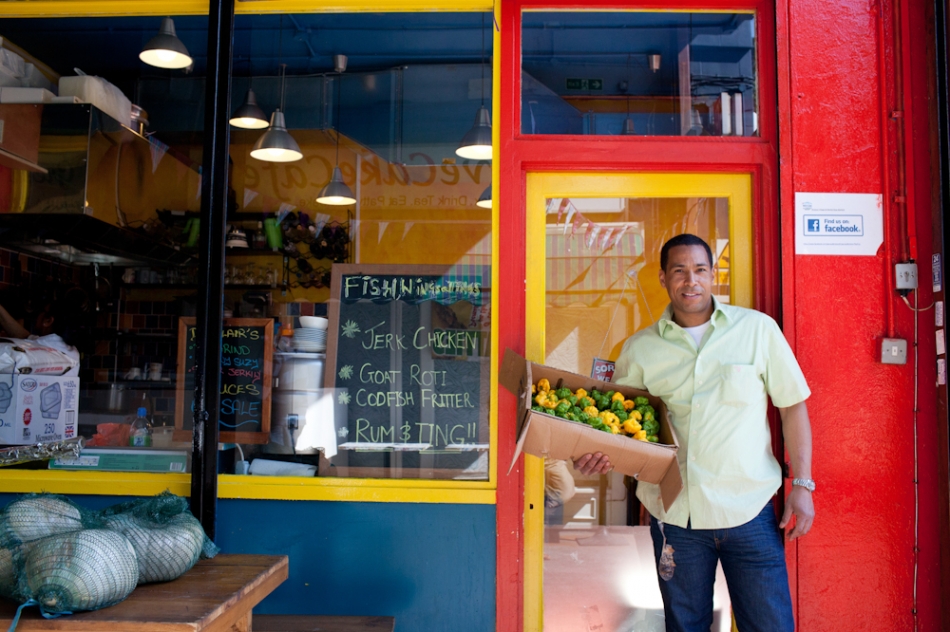Projects
- New, New England House
- Wealdstone Youth Workshop
- The Brighton School
- Learning from Kilburn
- Cricklewood Town Square
- Do Well and Doubt Not
- Brixton Village
New, New England House is a project to find an alternative future for New England House, a council-owned, eight-storey factory in Brighton.
New England House currently provides affordable workspace to an amazing community of over 100 makers: artists to architects, bakers to ceramicists, sculptors to software developers, wood-workers to wind-turbine testers (and us, unit 6, level 6). It is organic, collaborative, multi-disciplinary and publicly-owned. No council could build anything like this today.
The building is also about to undergo a £10m regeneration, which represents both a threat and an opportunity for the community that exists here.
New, New England House aims to develop an ambitious, alternative future for the building, from the inside out. We want to find a model that can support affordable workspace in perpetuity, create a new economics for the building, and re-position the building as an open, affordable and public factory for the benefit of the whole city.
We’ve brought together a team of Assemble, Peter Nencini and Europa. We’re currently putting together a plan to create a working model of New, New England House, in a space inside the building, to culminate in an exhibition next year.
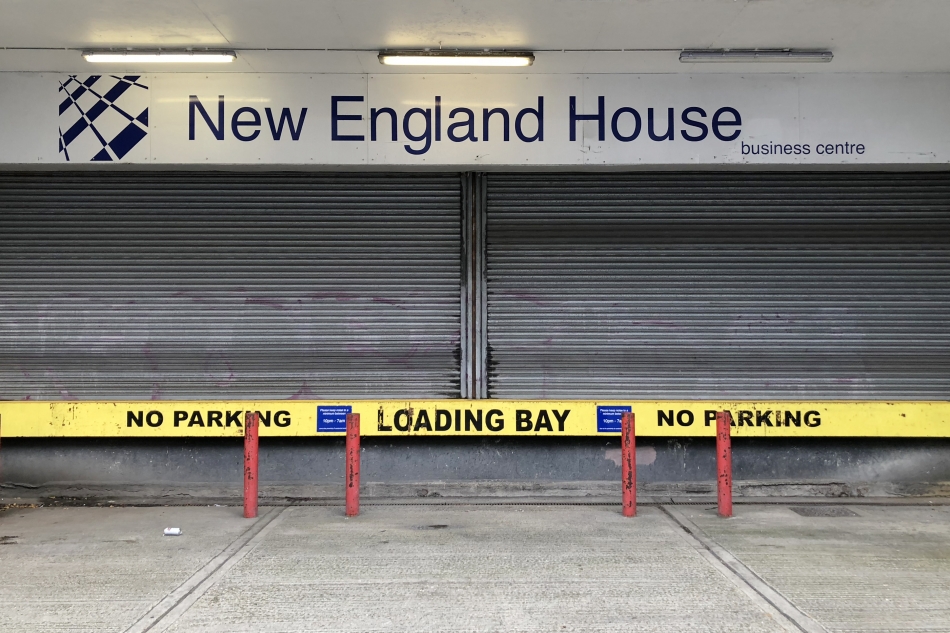
Wealdstone Youth Workshop is a public design project, in collaboration with the youth of Wealdstone, north-west London, to design and make furniture for use in the forthcoming Wealdstone Square.
We brought together a group of local 17 and 18 year olds – Esther, Marius, Tanya, Leo, Katy, Danica, Kayleigh and Marina – and commissioned multi-disciplinary designers Silo to work with them, to research, design and produce the furniture over a period of six months.
The Wealdstone Leg is the result – a new, strange, wonderful furniture component, which forms the basis of a range of stools, benches and chairs for use in the new square. The Wealdstone Leg was available to buy and use as a leg, an arm, a bracket, a thing. All proceeds went back into the project, with the youth each receiving a % royalty on each sale (along with a small stipend of £500 for taking part).
The project grew out of a brief to create new activity and new users for the square. We quickly realised, however, that the community had bigger problems: namely, a lack of activity for young people due to cuts to youth services, and the resulting negative perception of young people hanging around the town.
We set out to create a project that could change this dynamic, by putting the young people at the centre of what was happening in Wealdstone, and working with them to create something the rest of the community could use. Our ambition was always to create a piece of sell-able furniture, by Wealdstone, for Wealdstone, which could help change perceptions of both the youth and the area itself. Thanks to Silo and the youth, we got exactly that.
Wealdstone Youth Workshop was part of a wider project by Harrow Council to create a new public space at the centre of Wealdstone to bring the community together. The overall project was led by We Made That, with Spacemakers, Europa and others in support. We were assisted on the ground by Karolina Cialkaite.
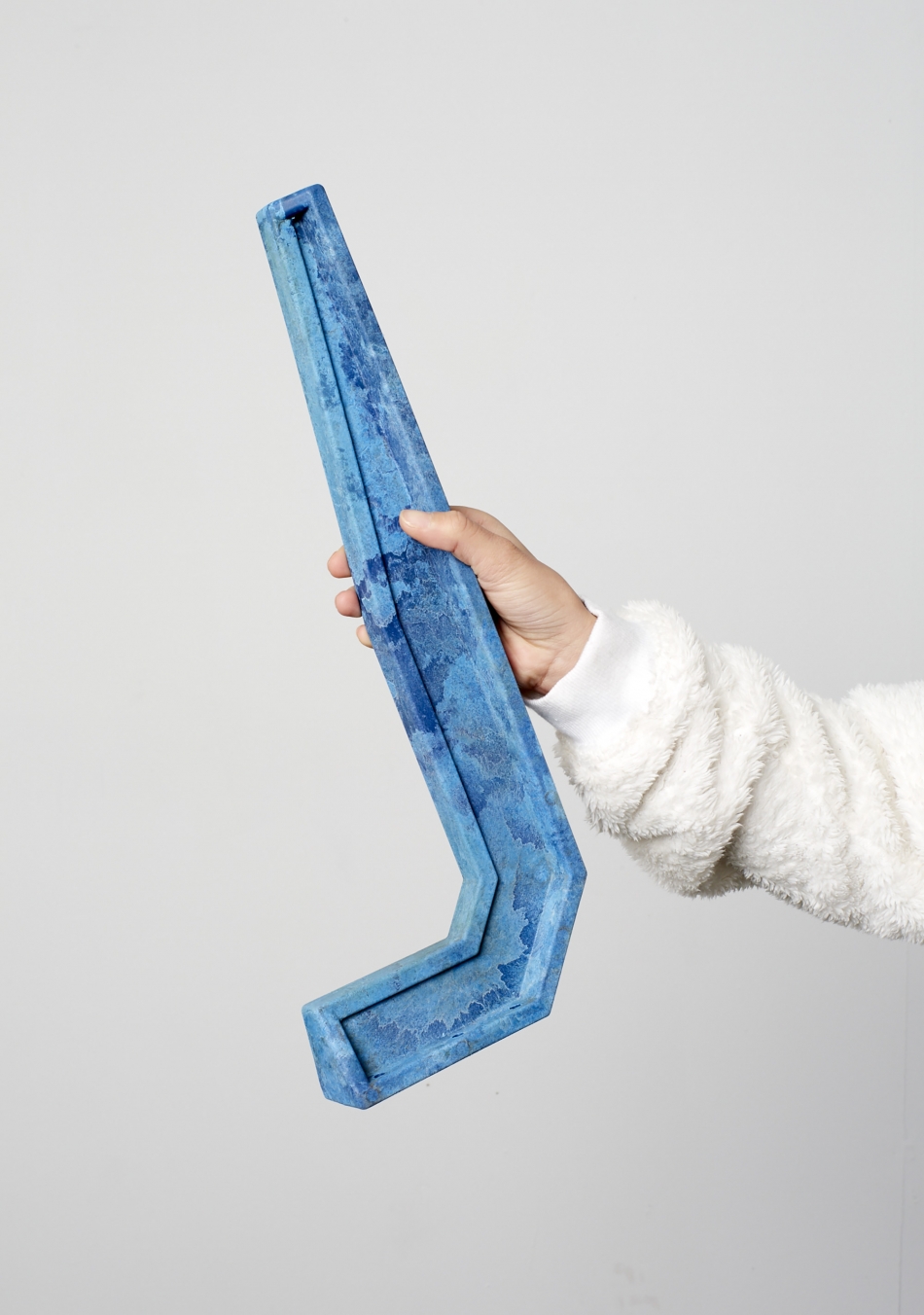



The Brighton School is a radical, postgraduate art school, working for the benefit of Brighton itself. It aims to harness the talent and ideas of the best Brighton graduates and put this talent to work on the city. At the same time, the school gives these graduates paid experience of real, public projects, and a means to stay in the city.
The school’s first project took place in 2015, and was built around a public art brief for London Road, a main high street in the city, teetering on the edge of gentrification. Spacemakers assembled an interdisciplinary team of five talented graduates from the University of Brighton to meet the brief: Alex Nunn, a filmmaker; Isabella Podpadec, a painter; Malcolm Bradley, a sculptor; and Martina Mina and Roz Wells, both architects.
Through six months of intensive support and programming, and with the help of external tutors/organisations including Muf, Air, Kathrin Böhm and Eastside Projects, the school produced a strange, subtle and beautiful work of public art, in the form of the first urban stone circle in England, and probably the world. We’ve published a book about the process, and the politics behind it, which you can find here.
We’re now working on turning The Brighton School into a permanent institution for the city. Long-term we don’t just want the school to do public art: we want it to do public everything. We think it can be a new way of creating public projects across Greater Brighton: new housing, new public spaces, transport, economics, whatever the city needs.




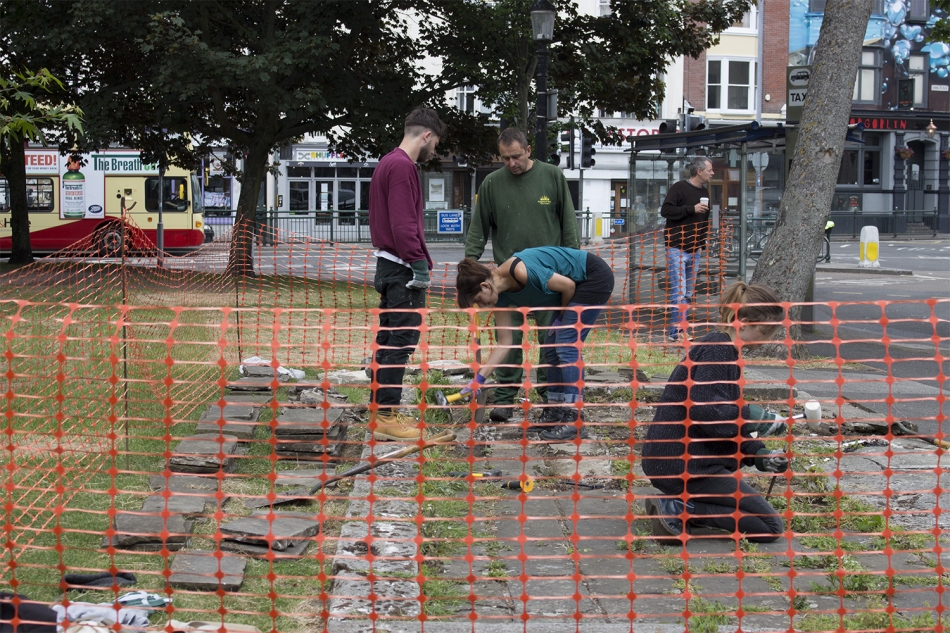
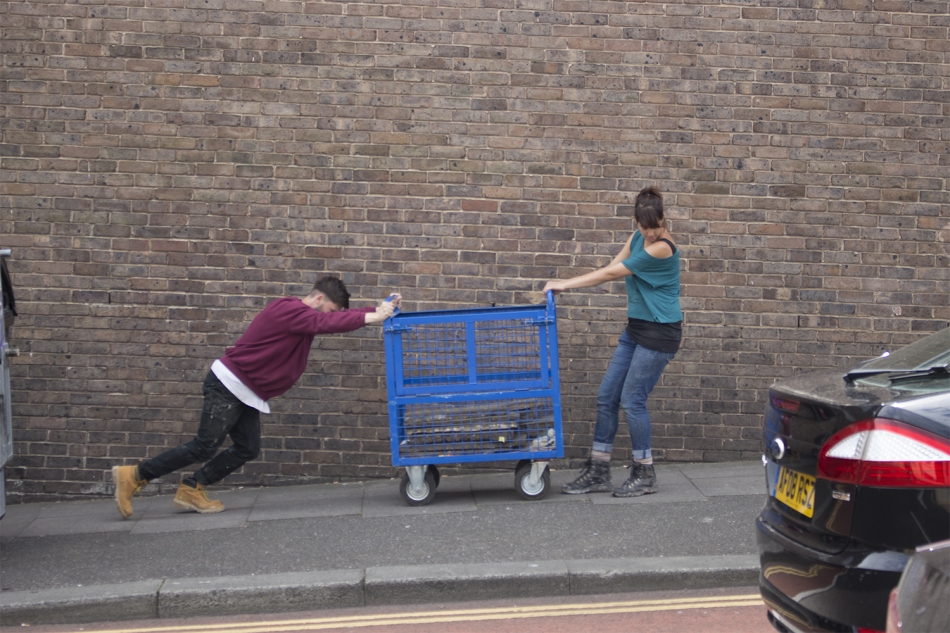


Kilburn High Road is a classic London high street: packed with people, lined with cheap shops and cafes, and slowly losing its identity. Responding to a joint council brief for a pop-up shop project, Spacemakers proposed that, rather than more shops, Kilburn needed new ideas, and a place to have them.
Learning from Kilburn is the result: a tiny, experimental university, of, for and about Kilburn. Drawing on the High Road as both curriculum and campus, the university offers a series of free classes, each led by a range of artists, architects and thinkers, and each studying a different aspect of the area.
With classes including 'What does Kilburn wear?', 'Where does Kilburn live?' and 'Does Kilburn even exist?', we aim to help local people study what makes Kilburn the place it is, and to create a space for the community to imagine new futures for the area.
Learning from Kilburn ran from October 2013 to May 2014. The project was directed by Tom Keeley, in collaboration with OK-RM and Pernilla Ohrstedt Studio, and funded by the London Boroughs of Brent and Camden. Photography by Theo Simpson.

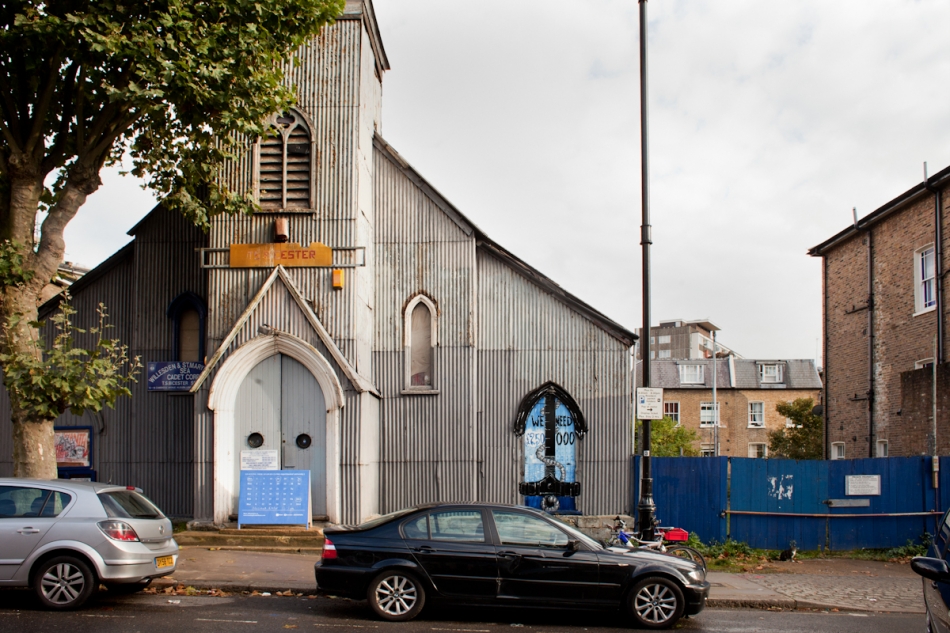

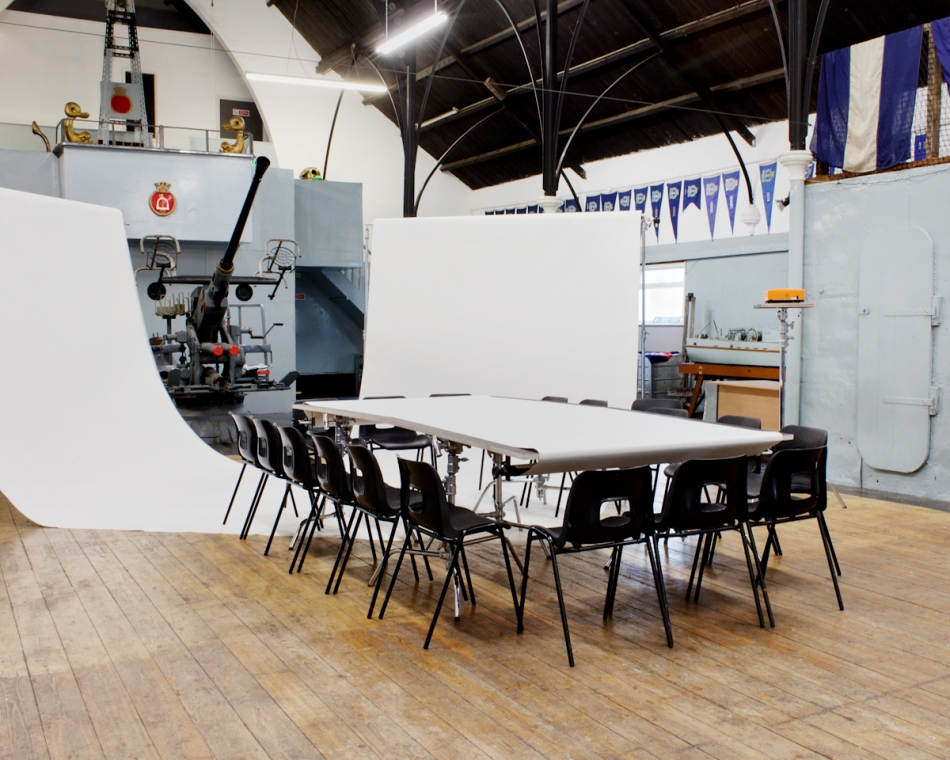
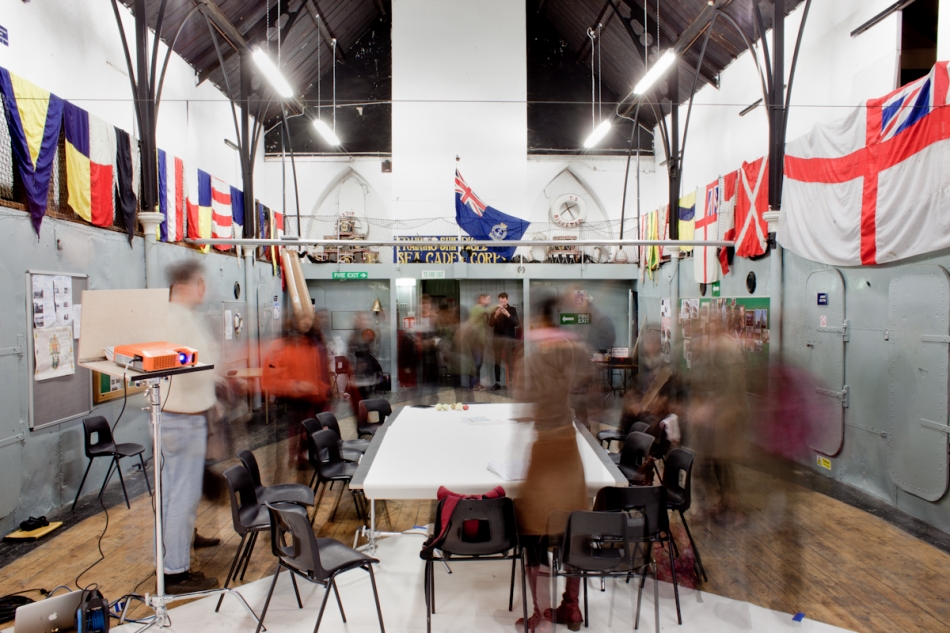

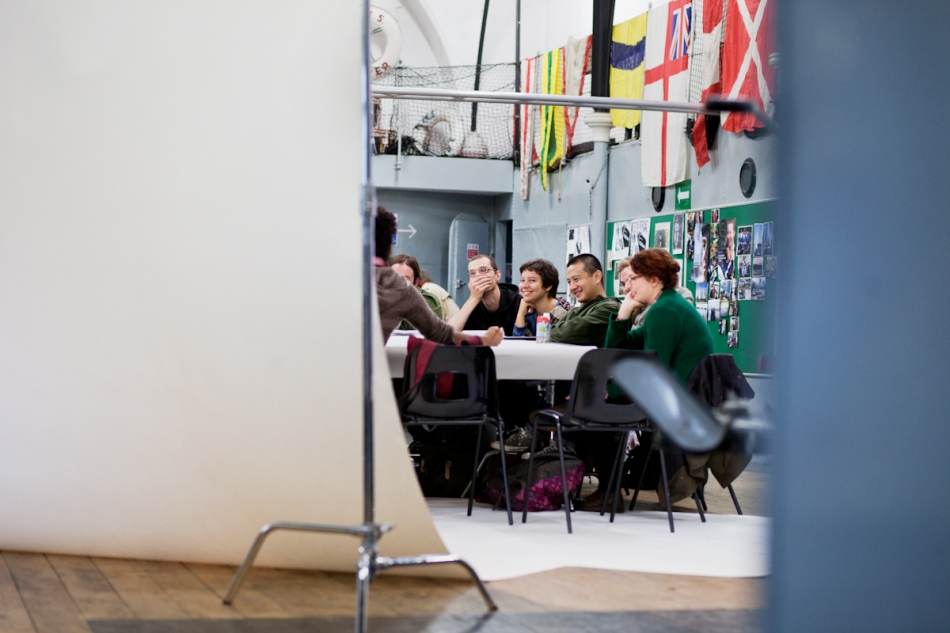

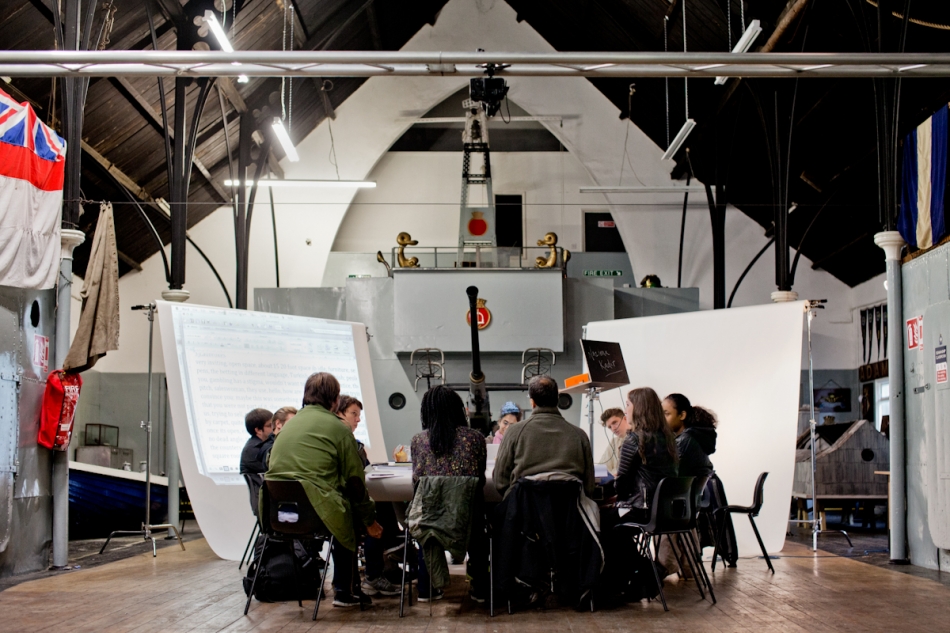
Cricklewood, in north-west London, is a community on the borders of three boroughs, and thus tends to be civically ignored: it has no public space, no town hall, no library, not even a bench.
In response to a site-activation brief as part of a wider project, Spacemakers proposed Cricklewood Town Square: a mobile public space, which could roam across the area, reclaiming forgotten patches of land, and transforming them with a programme of events into civic space for everyone to use.
We commissioned Kieren Jones to design a town hall on wheels, which ranged across Cricklewood for a month, occupying such unlikely spaces as a grass bank next to B&Q, an empty pavement outside the Bingo Hall, and the roof of a car-park. At each site, a programme of events activated the space, based on William H. Whyte’s seminal film 'The Social Life of Small Urban Spaces'.
In effect, the project was a bicycle-powered Trojan Horse, aiming to set a precedent: to demonstrate to a neglected community how useful public space can be, and how vital it is in forming that community in the first place.
Cricklewood Town Square ran in September 2013. It was funded by the Mayor of London's Outer London Fund and LB Barnet, and was part of a wider series of projects led by Gort Scott Architects. Photography by Theo Simpson.
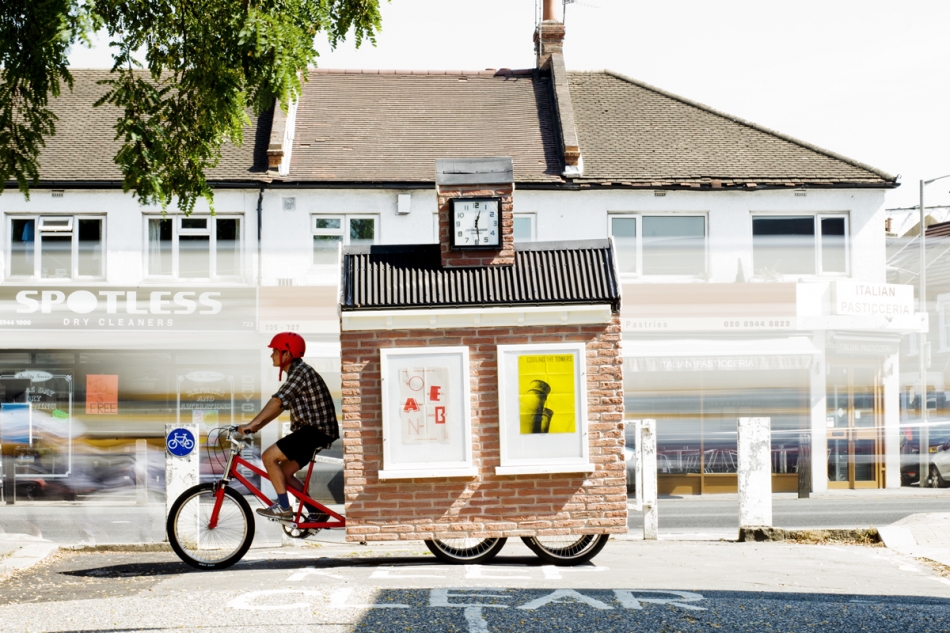


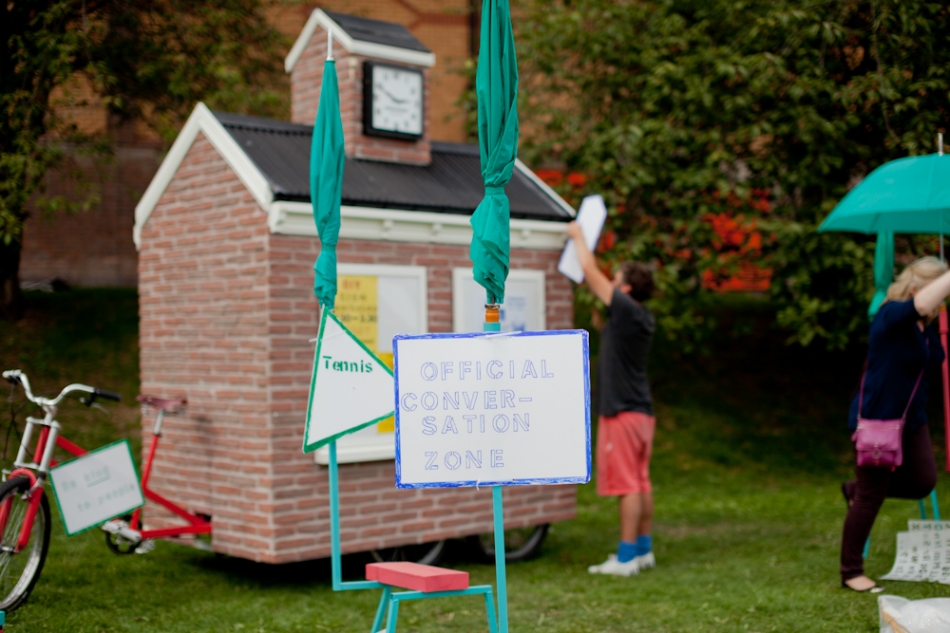
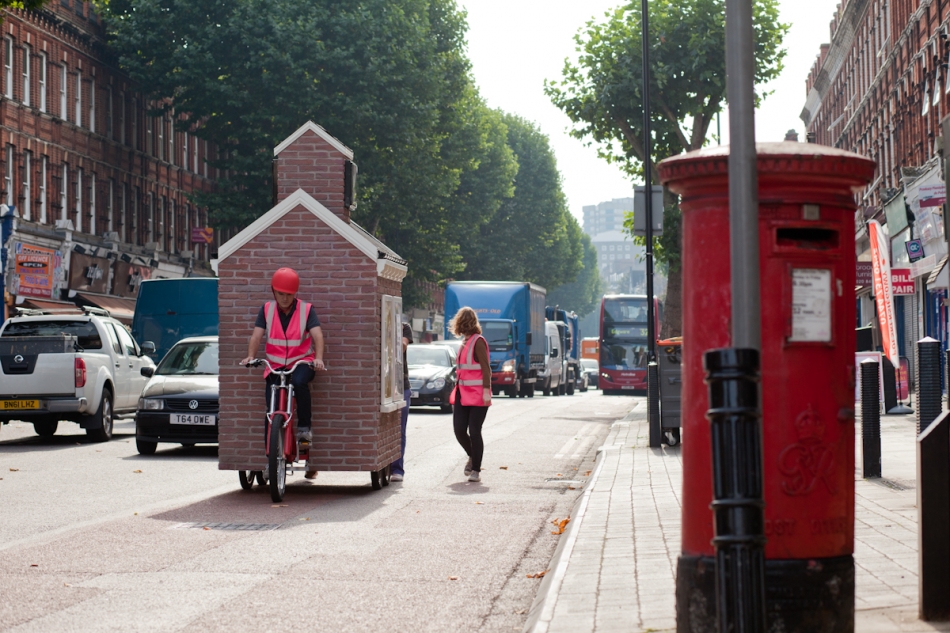
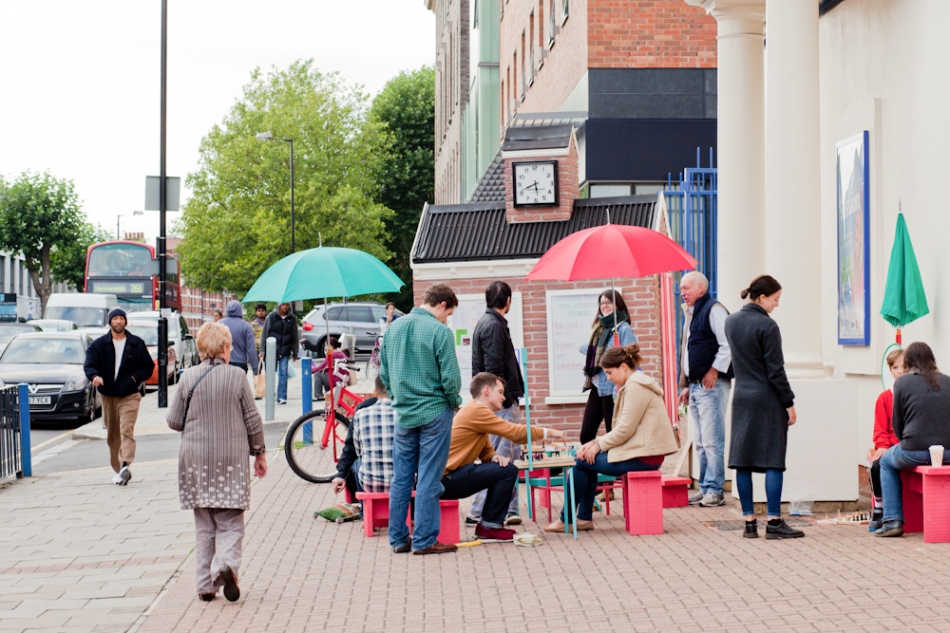

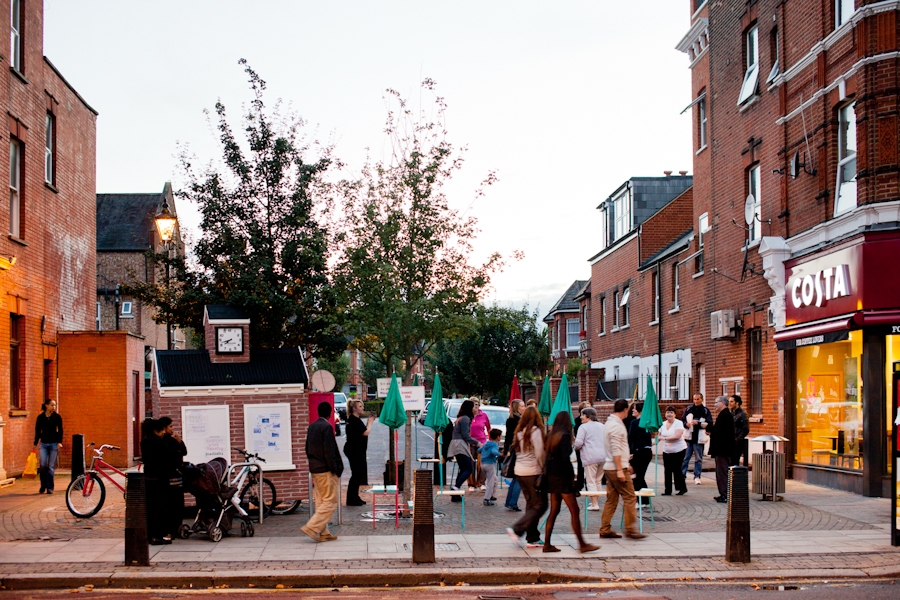



Do Well and Doubt Not is a fanzine for and about Tottenham, published in the aftermath of the riots of 2011.
The fanzine, distributed for free, was composed of interviews with local people, published verbatim. It aimed to give the community a voice on post-riots Tottenham: to let people celebrate their area, whilst also addressing the problems and opportunities that they see around them. Its name was taken from the discarded town motto, displayed on a coat of arms in the old town hall.
Do Well and Doubt Not was published by Spacemakers, edited by Tom Keeley, designed by Jon Cannon, and printed by Newspaper Club. It was commissioned by the Greater London Authority. Photography by Theo Simpson.

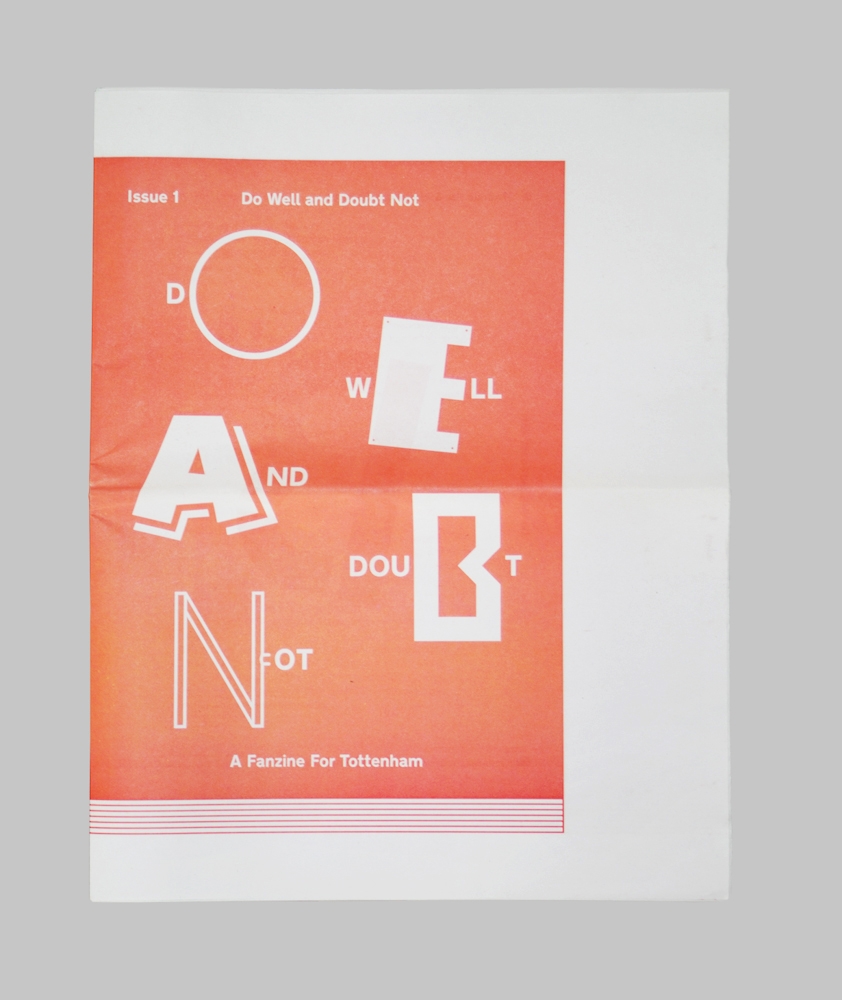




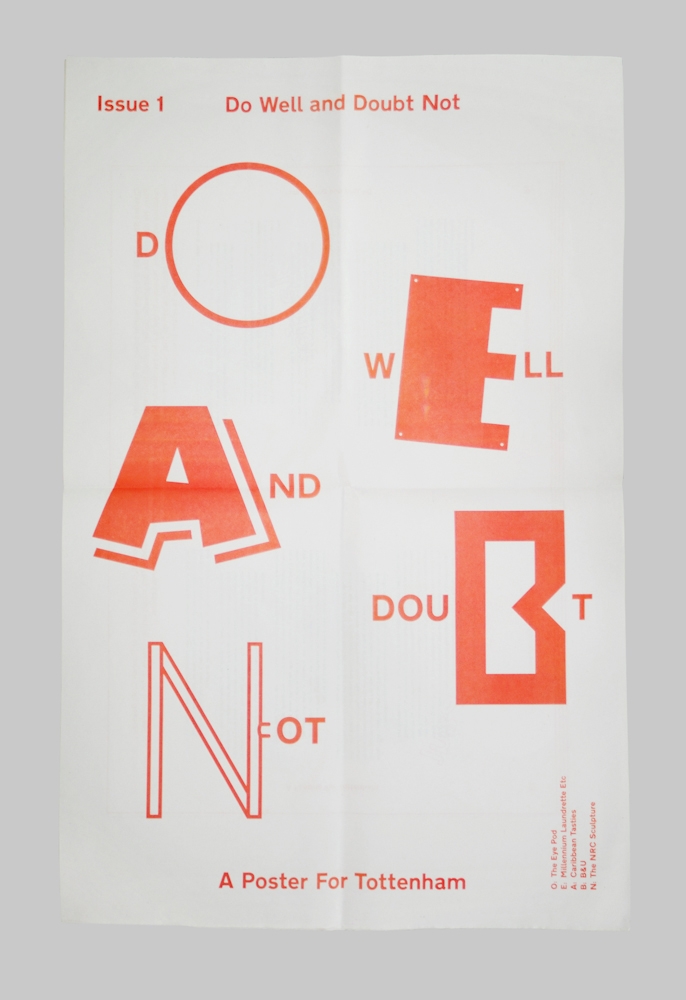

Spacemakers was formed in 2009, around a year long project to rethink a failing 1930s covered arcade in Brixton. The arcade had been going downhill for years, with twenty units sitting empty, and was slated for redevelopment: the owners planned to demolish half of it, and stick a ten-storey apartment block on top. After a successful community campaign to prevent this, Spacemakers were approached by London & Associated Properties and Lambeth Council, to come up with a Plan B.
We took the keys to the empty units, and designed a project to rebuild the social life of the market, by offering three months free rent to anyone with an idea for reusing one of the spaces. In response, we received 98 proposals in one week, with people using the units for band rehearsals, galleries and meeting rooms, along with shops, cafes and proto-bars.
Together, these uses brought new life to the market, complementing the existing traders, and leading to the permanent establishment of a thriving, locally-powered economy in Brixton. By the time we finished our work in 2010, the market was fully let for the first time since 1979.
Photography by Gemma Thorpe.


